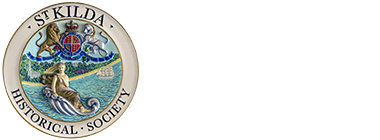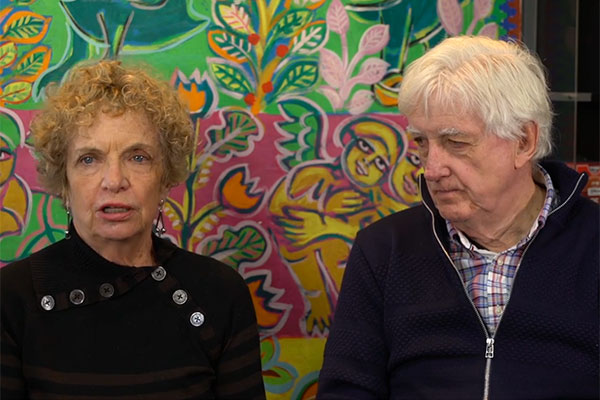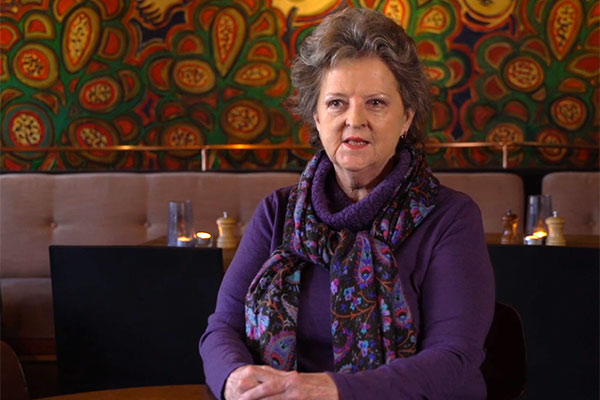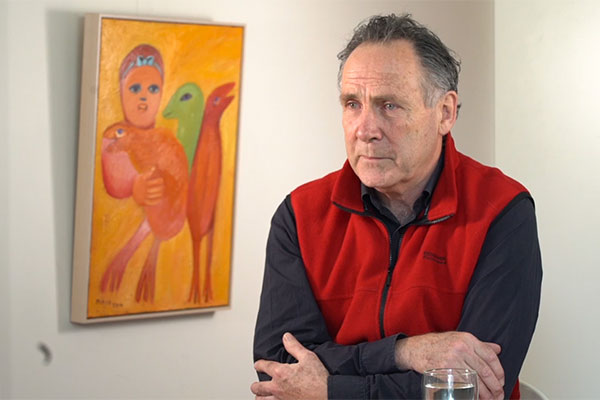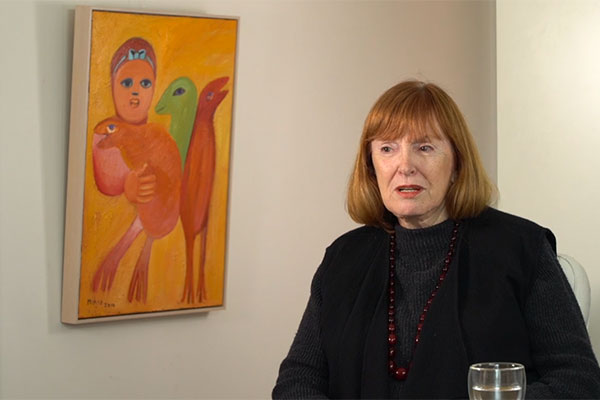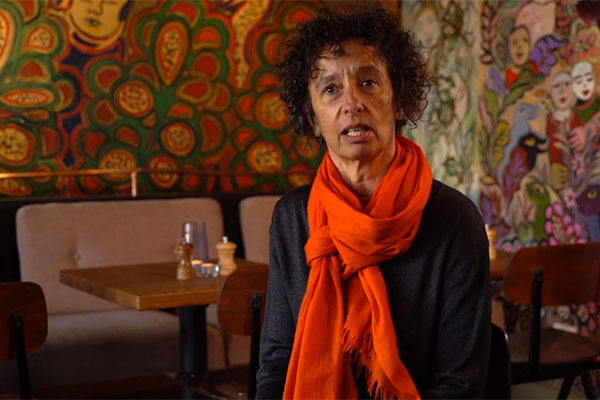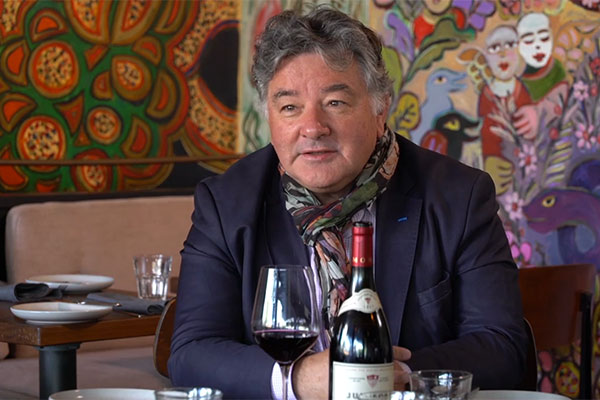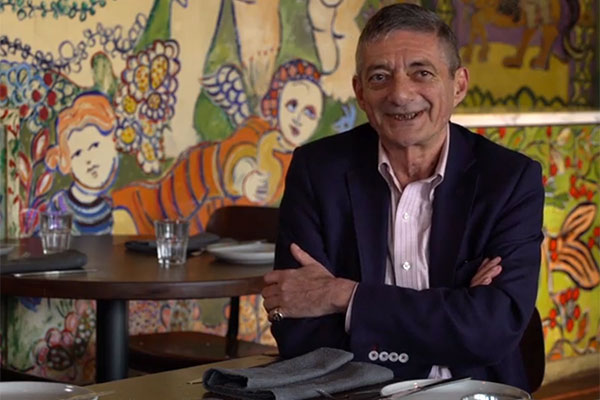Image: Screen Shot - each pic linking to the interview
Find out more about the interviewees.
What St Kilda meant to Mirka was...a great forum for her creativity. (Janine Burke)
The ten interviews conducted in 2019 with family, friends and colleagues recall a warm, creative, bohemian woman, a provocative character. Mirka was a beloved local identity. Her joyful exuberance meant she would readily strike up conversations with people in the street.
She had this capacity to win over children, the elderly, dogs, cats, people. Wherever she went, she really made a big effort to respond, to help people to make their life better and improve. (Helen and Jack Halliday)
On a personal level, Mirka’s circle speak fondly of the crowded home/studios she created in St Kilda, the rooms and narrow passages brimming with collected treasures, canvases and paints. Plus there was her hospitality.
On a professional level, Mirka was dedicated and hard working with a unique perspective and an independent mind, even when it came to the craft of laying mosaic tiles.
Mirka was a character...who was larger than life. But I think in a way that persona also masked a shyness or a certain sensitivity or melancholy, which very much related to her early childhood experiences of the Holocaust...And her work, I think, also reflects that. On the one hand, it is exuberant and joyous, but on the other hand, underlying that is also a psychological intensity and a certain melancholy. (Max Delany)
Click on the images below to view interviews
Ann Holt, artist and St Kilda resident since childhood, was a close friend of Mirka’s. They met in the mid-1980s through Ann’s flat mate, the expressionist painter David Larwill (1956-2011). Ann remembers a mentor who took her under her wing when she was a really young painter, and a friend who loved to lunch, to read a lot and to talk about art – and she recalls Mirka’s love for St Kilda.
She was a Holocaust survivor and there were so many Holocaust survivors in St Kilda. It was the place where I guess she felt that she’d found a home. . . Barkly Street was an epicentre for her. . . St Kilda life really suited her coming from Europe, having street life. She was very well known on the street.
Helen and Jack Halliday owned Cosmos (now Readings) and Metropolis book shops in Acland Street. Their shops were a mecca for Mirka who bought extensively in the areas of art and non-fiction. About a year after opening Cosmos, Helen and Jack commissioned Mirka to paint a mural on the round column near the entrance, which is still there today.
We opened the shop (Cosmos) at the end of 1985 . . . and Mirka rapidly became a regular and frequent customer. . . She loved the shop because there were people here. She could engage with them . . . she loved that interaction and being the centre of what was going on.
Janine Burke art historian, novelist and curator, first met Mirka in 1974 when she interviewed her for the student paper Farrago, at her Wellington Street home. Janine takes us on a journey into Mirka’s studios/homes, her friendship with Joy Hester and Sunday Reed, her collections and her art, the lover she left her husband and children for, and, of course, her impact on the streets of St Kilda.
St Kilda was Mirka’s theatre. It was where Mirka could star in her own kind of street art, if you like, because she was a very visual identity... She would be wearing like maybe a fabulous gown from, who knows, the 1890s or something, with some lace at her throat. She’d be wearing red shoes, she might be wearing a kind of wild-looking hat, and she’s on a scooter, going up and down the street...
Kevin Wilson was a former manager of Linden-St.Kilda Arts Centre and is current curator at Artisan, Brisbane. In 1993 he commissioned Mirka to produce the St Kilda Pier Mosaic as part of a public art program. Kevin provides insights into Mirka’s creative process, the evolution of the work, and the inspirations behind it.
The brief to Mirka was to actually create a story or historical imagery about St Kilda, but also her vision of how she saw St Kilda... When I worked with her there was a lot of conversation at the mosaic about ‘this is how you do a mosaic’... she’d be giving me little lectures on how a mosaic works and what kind of colours, where she’s going to get the colours from... she’d spend hours meticulously putting those mosaic tiles down.
MaryLou Jelbart, currently Director at 45 Downstairs, is a former City of Port Phillip Councillor, who lived near Mirka and has been her friend since the 1970s. She shares memories of an outrageous friend who was extraordinarily smart and sensitive, a fantastic cook, an avid reader, and a wonderful character who had made St Kilda her own.
St Kilda had some wonderful characters, but I think Mirka was an outstanding one. She used to walk around St Kilda with her pram. I never saw her without it in Acland Street and it would have the teddy bear or a couple of dolls or whatever... she just loved creating sensations and surprising people... everyone loved it and everyone knew her.
Max Delany, CEO and Artistic Director, Australian Centre of Contemporary Art, first met Mirka in 1989 when he was working at the William Mora Gallery in the city. In 1999, living just around the corner from her Barkly Street home, he co-curated a major Mirka Mora retrospective at Heide Museum of Modern Art called Where angels fear to tread. Max speaks about the influences on Mirka's work, of Mirka as a transforming figure in Melbourne’s cultural life, and the hospitality she excelled in.
It was a great privilege and a very precious time to go to Mirka’s studio in Barkly Street. I remember always having to walk sideways through the very narrow passageways... But, extraordinarily, as replete and full as it was of books and collections and toys and dolls and brushes and paints and easels and boxes, Mirka knew where everything was.
Murray White, Director, Murray White Room, co-curated Mirka Mora’s retrospective Where angels fear to tread at Heide Museum of Modern Art. He takes us back to his 1970s school days at Preshil School in Kew and to the doll-making workshop with Mirka when he was just eight years old. Murray also talks about her art and the 1999 retrospective, which saw him exploring her Barkly Street home collections.
I was incredibly warmly welcomed into a rather chaotic environment, very crowded and full of life and history of life ... paintings, sculptures, photographs and ephemera and documents... and every evening I was there she would make me this wonderful hot chocolate.
Sabine Cotte, conservator and author of Mirka Mora: A life making art (2019), provides expert insights into the practical aspects of restoring Mirka’s mural at Tolarno and her St Kilda Pier mosaic. She recalls Mirka’s input into the process, her doll collection and the enduring mark she left on St Kilda.
She made really an impression when she was living in Barkly Street ... she was so part of the landscape of the cultural life of St Kilda and I felt that. When I was restoring the mosaic, people would stop and tell me, ‘Oh,.. I remember Mirka doing that’ and telling me stories.
Serge Thomann is a photographer, St Kilda activist (founder of unChain), and former City of Port Phillip Councillor. He and Mirka became close friends after meeting in the Acland Street Newsagency when both were queueing for French magazines. They shared a love of art, good food, and great conversation. After Mirka left St Kilda, he would bring her back for lunches, organised her 80th birthday party at the newly renovated Tolarno Bistro, and involved her in local activism (the anti-development Triangle campaign).
Mirka allowed us (unChain) to use two or three of her paintings to do prints of limited edition that she signed and that she numbered... they sold out.
William Mora, Mirka’s second son, is director of William Mora Galleries (Richmond) and executor of the Mirka Mora Estate. He reminisces about living at the Tolarno Hotel as a young man, the family’s routine and his mother’s work and her studio.
Mirka would love it when we came and looked at what she was doing and she was always very keen to get our opinion on her latest work of art... Mirka’s studio was absolutely jam-packed with works of art in progress, finished works were hung salon-style floor to ceiling. It was fabulous. So when Mirka wasn’t in the restaurant she was in her studio working.
